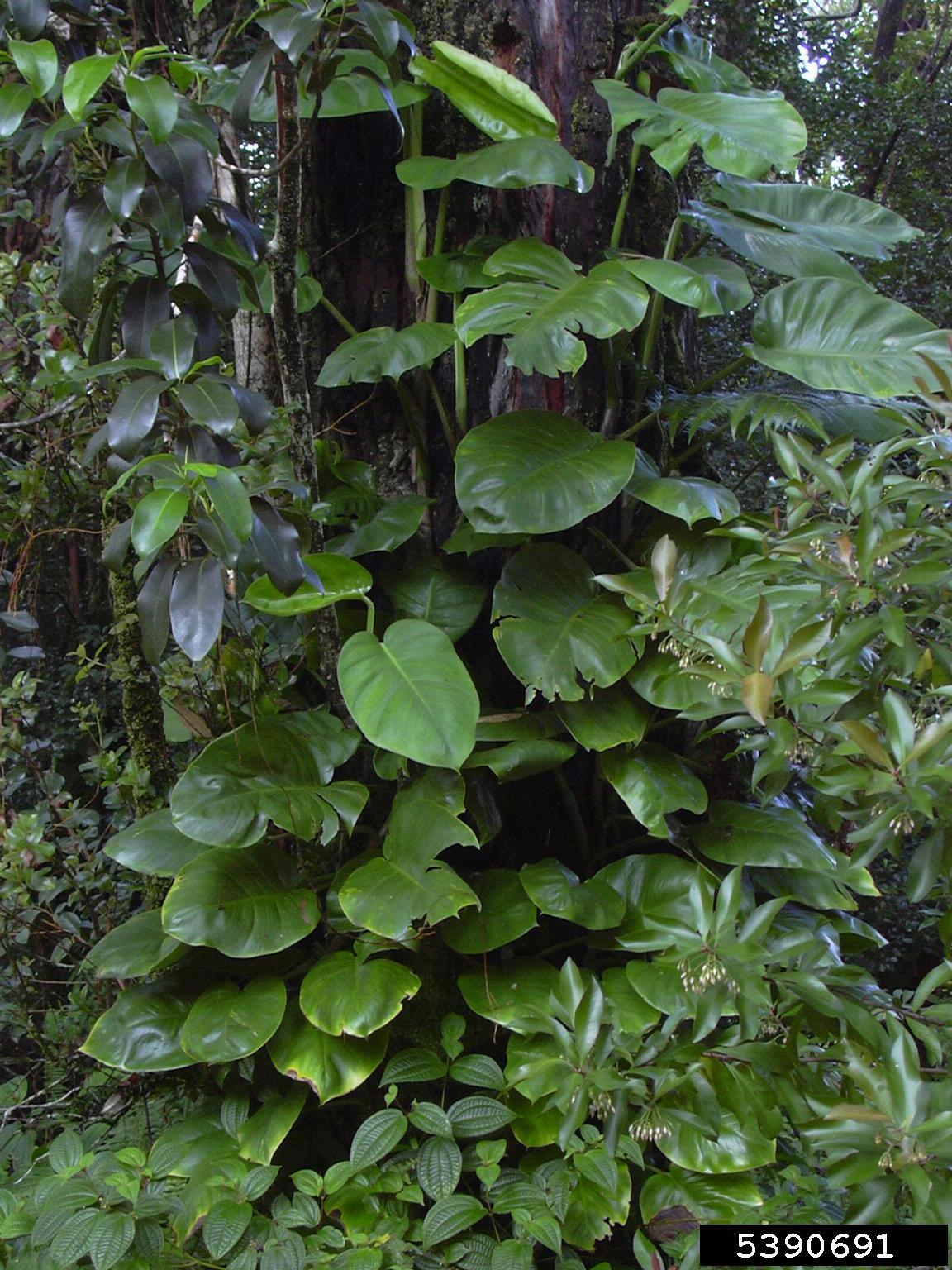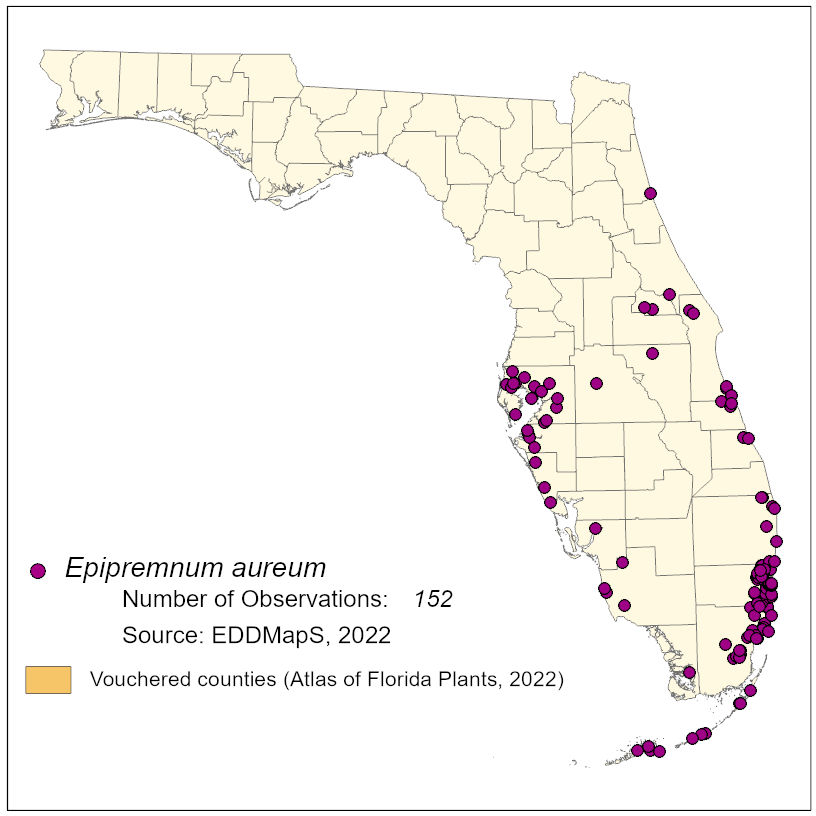Common Name: golden pothos
Family: Araceae
Common Synonyms: none
USDA Hardiness Zone: 10b-11
Growth Habit: Vine
Origin: Solomon Islands, China to tropical Asia
FISC Category: 2
FDACS Listed Noxious Weed: No
Introduction Date: 1974
IFAS Assessment:

Herbaceous, evergreen, vine to 30 m climing high into trees with aerial roots. Stems and leaf stalks sheathed with leaf-like bracts that wither and remain as fibrous sheaths. Leaves alternate, juvenile and mature leaves have different forms. Juvenile leaves are simple, entire, glossy, to 30 cm long, while mature leaves are elliptic to oblong and irregularly divided or deeply lobed, often variegated to 80 cm long. Inflorescence a fleshy cylindrical spike to 17 cm long with tiny densely-packed cream-colored flowers sheathed by a cream-colored bract. Fruit a small berry.
Tropical hardwood hammocks, floodplain forests, pinelands, hammocks, disturbed areas
Roots easily from cuttings.

Note: Multiple treatments are required
Dave's Garden. 2014. PlantFiles: Tonga vine, Epipremnum pinnatum. http://davesgarden.com/guides/pf/go/192743/. Accessed on June 20, 2014.
Langeland, K.A., H.M. Cherry, C.M. McCormick, K.C. Burks. 2008. Identification and Biology of Non-Native Plants in Florida's Natural Areas-Second Edition. IFAS Publication SP 257. University of Florida, Gainesville, Florida.
Wunderlin, R. P., and B. F. Hansen. 2008. Atlas of Florida Vascular Plants (http://florida.plantatlas.usf.edu/).[S. M. Landry and K. N. Campbell (application development), Florida Center for Community Design and Research.] Institute for Systematic Botany, University of South Florida, Tampa.